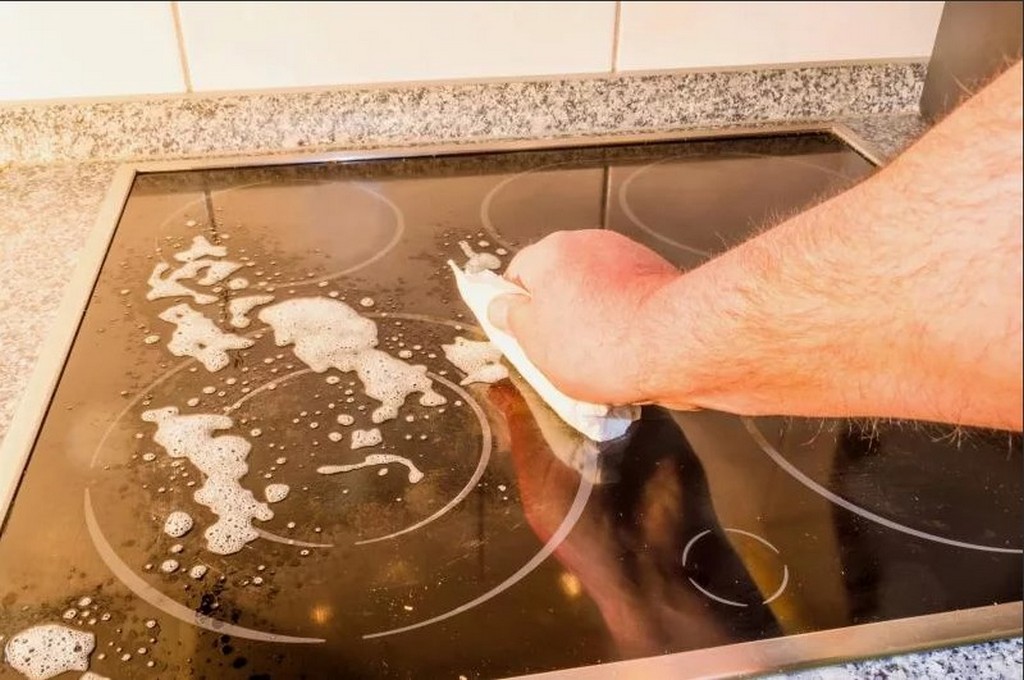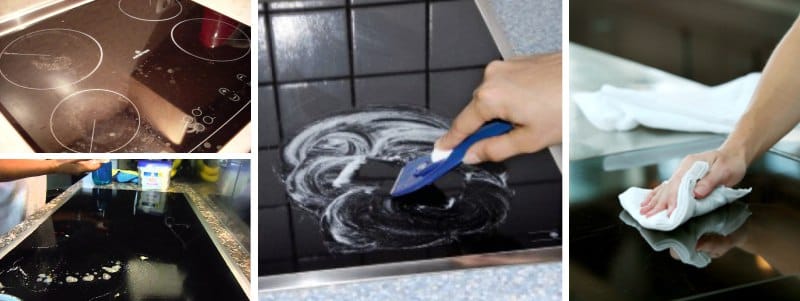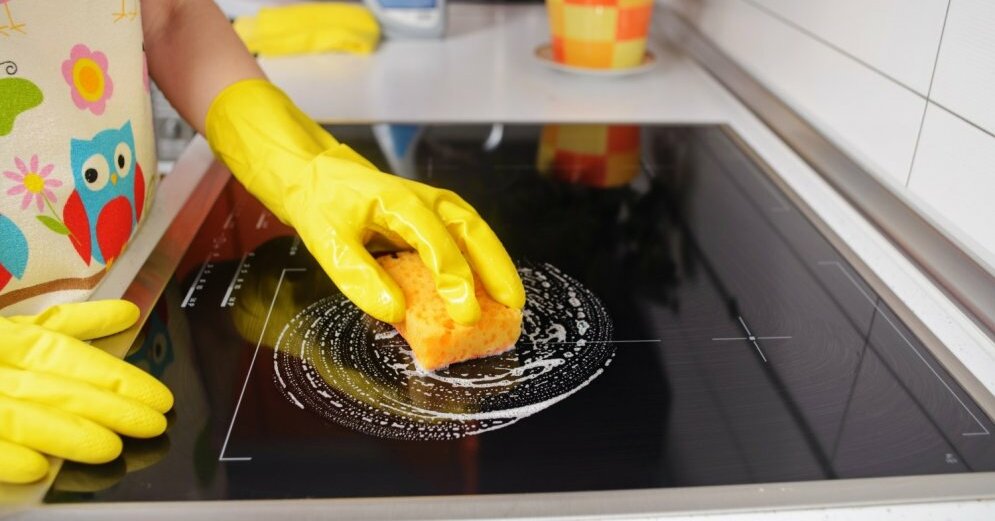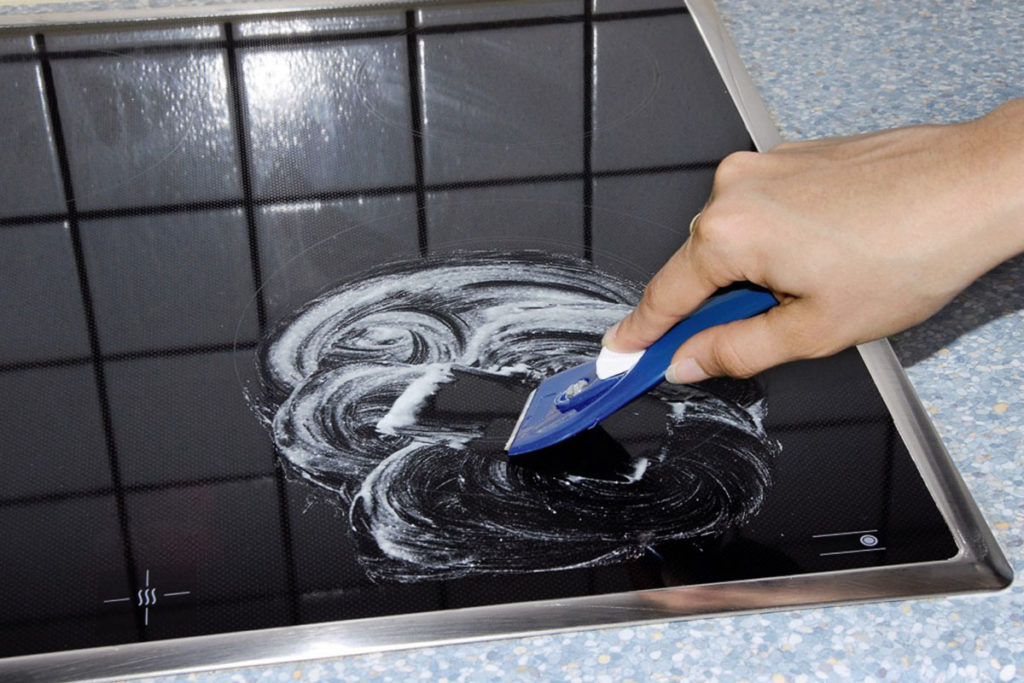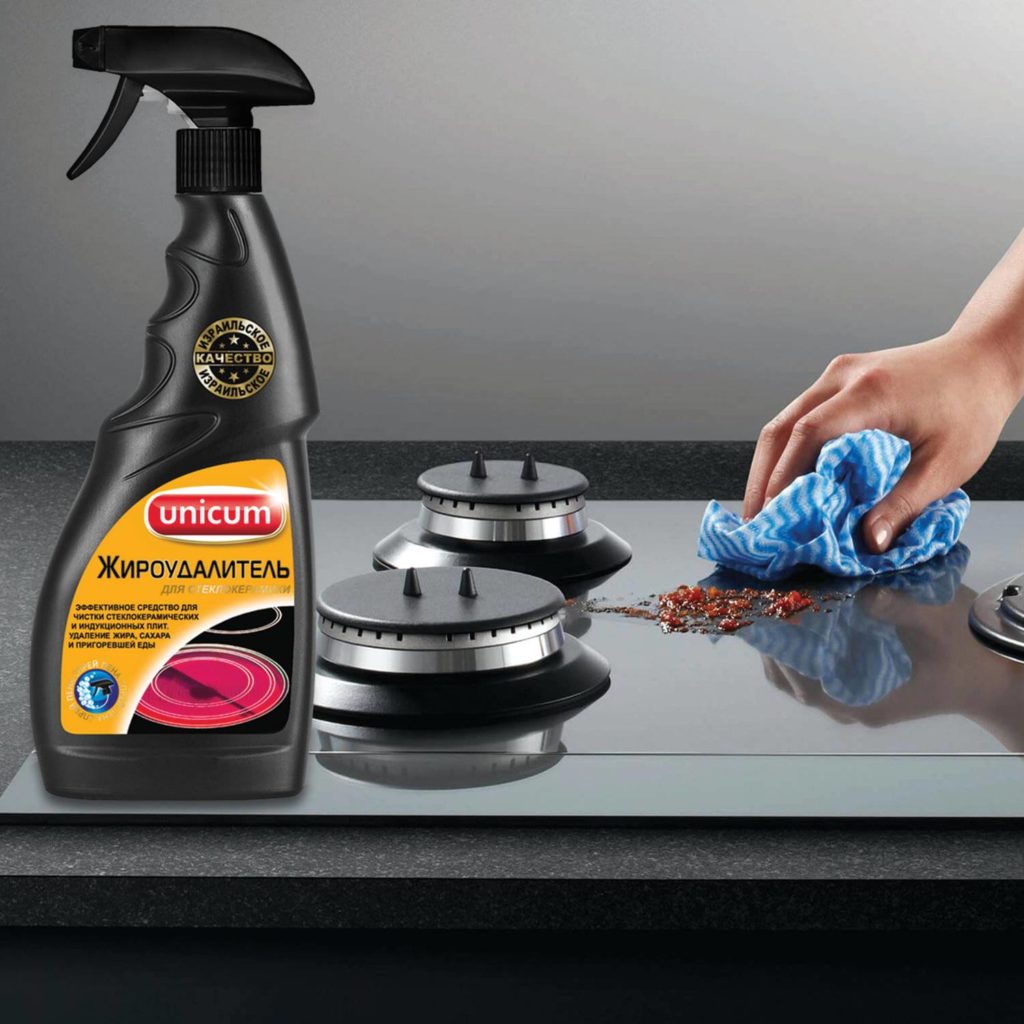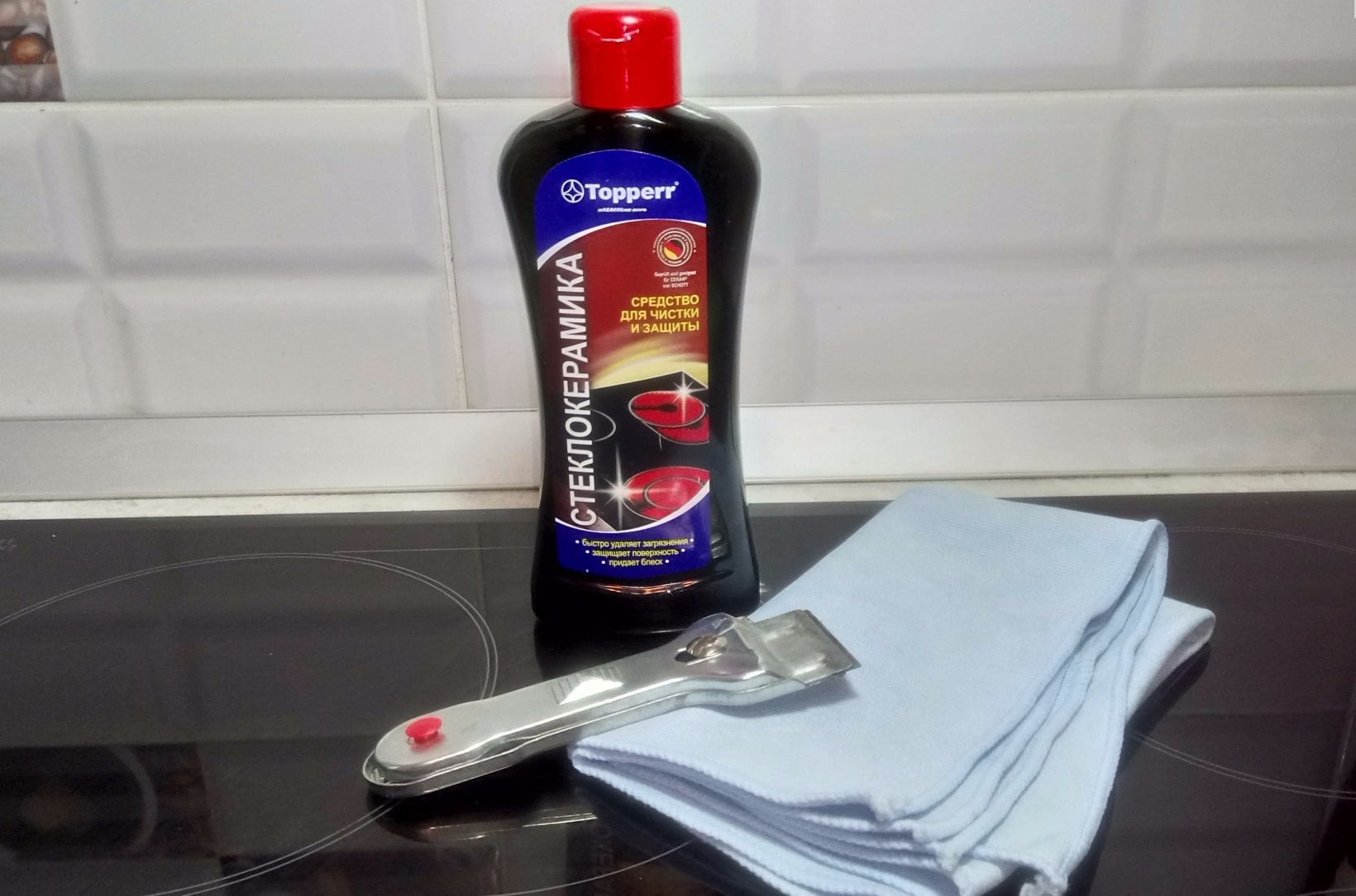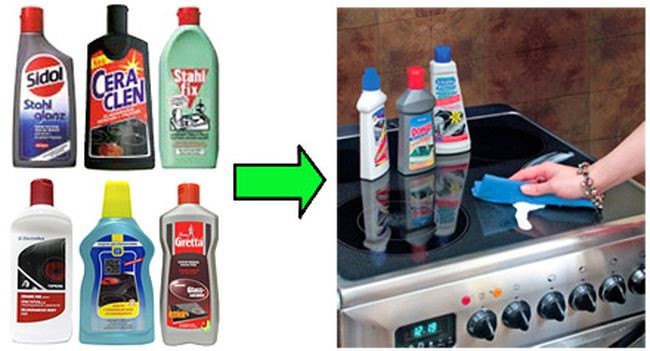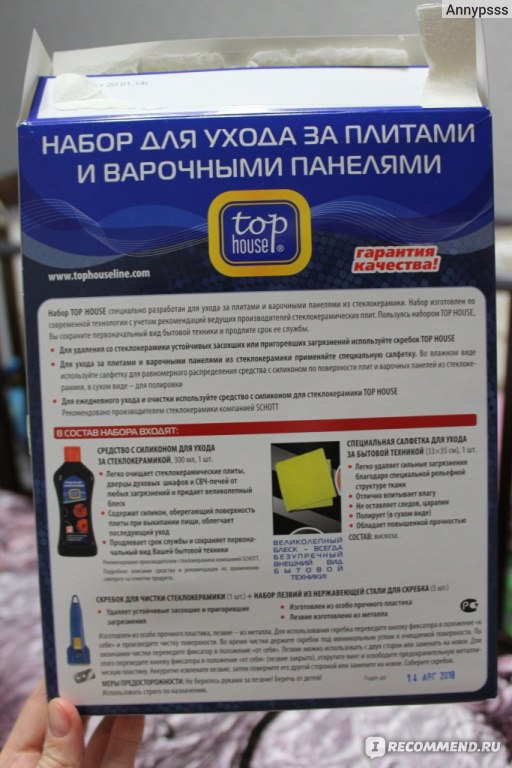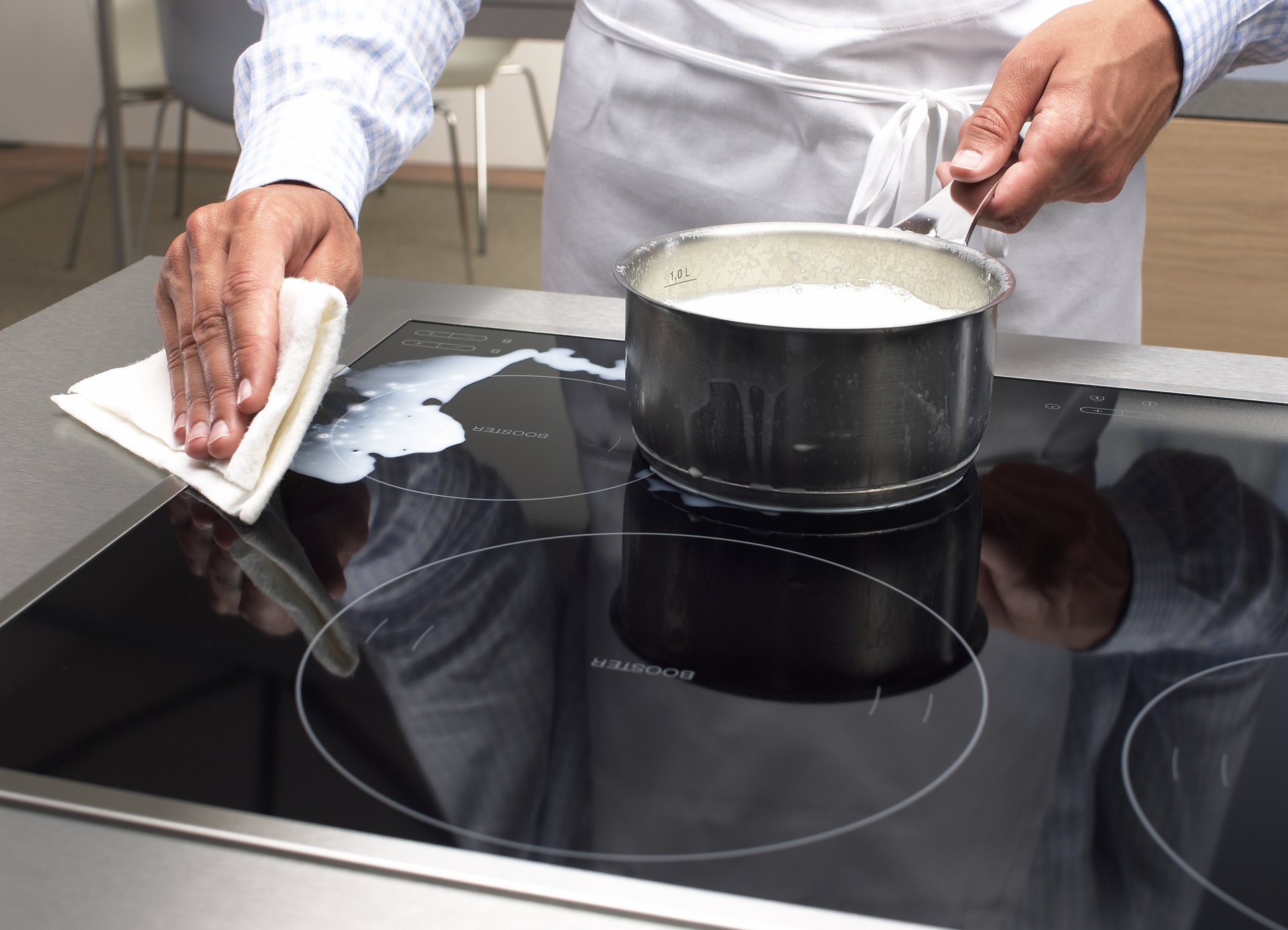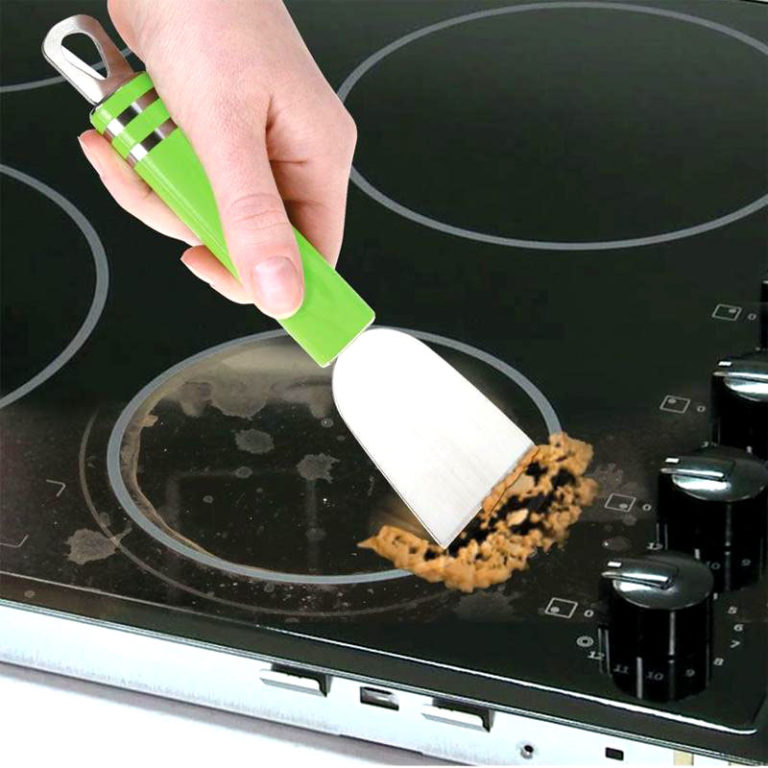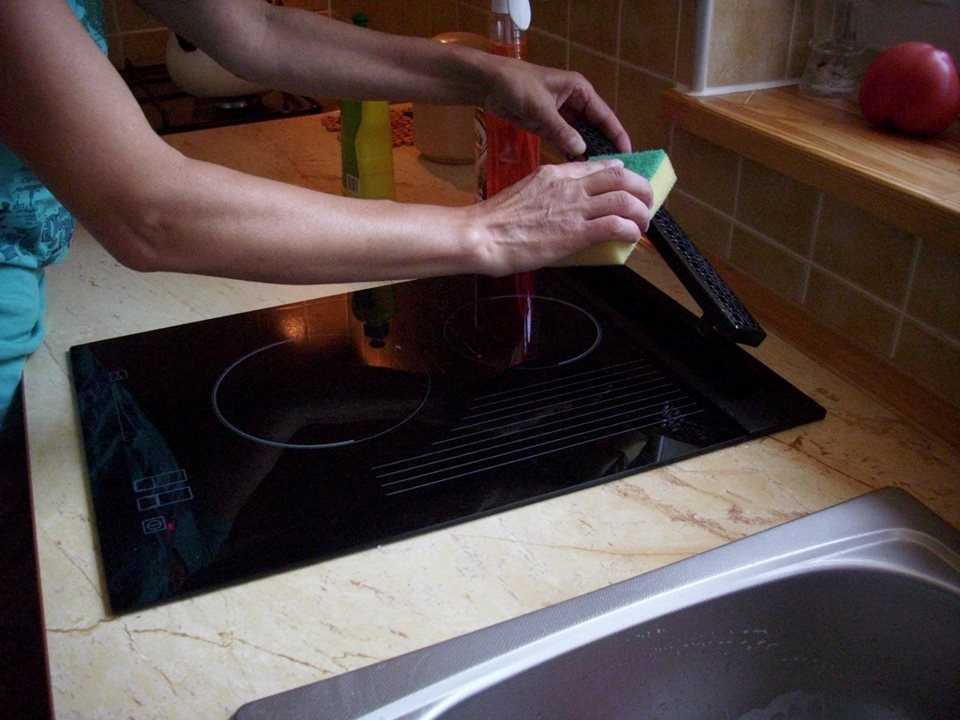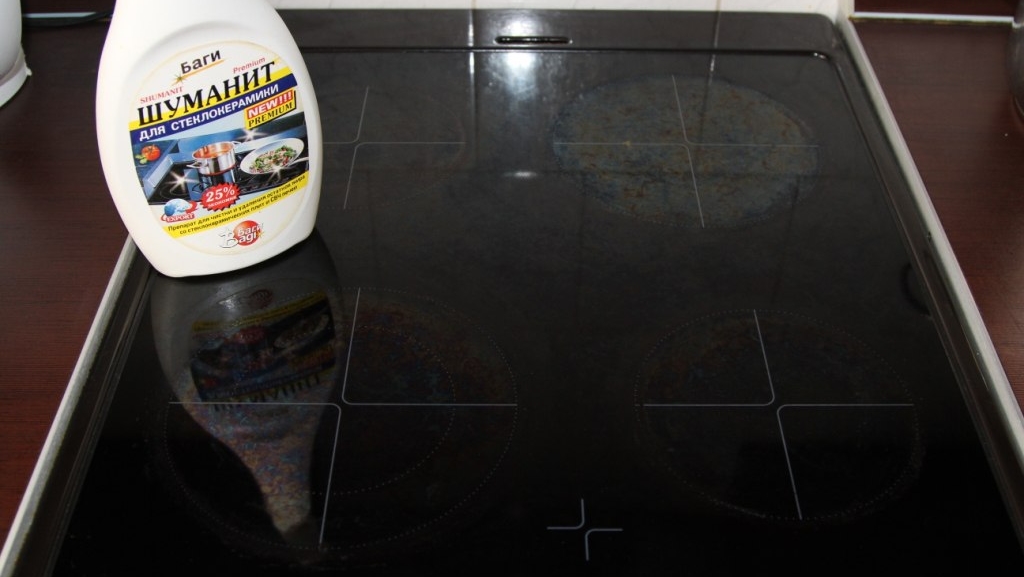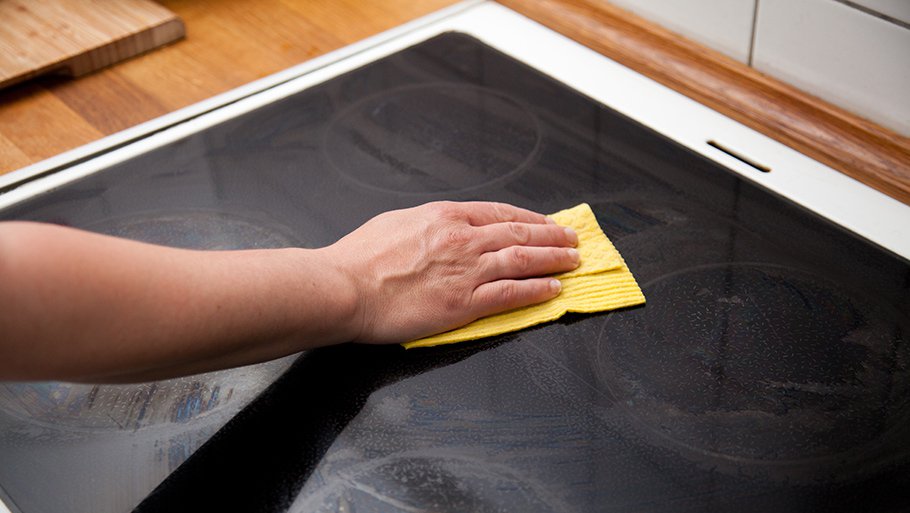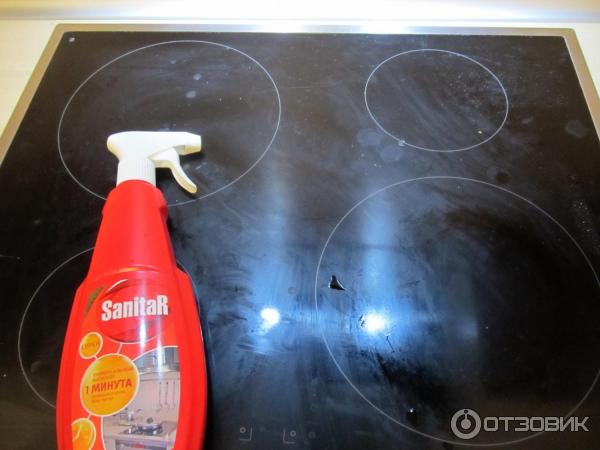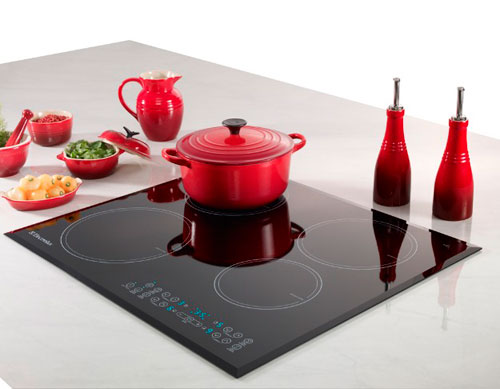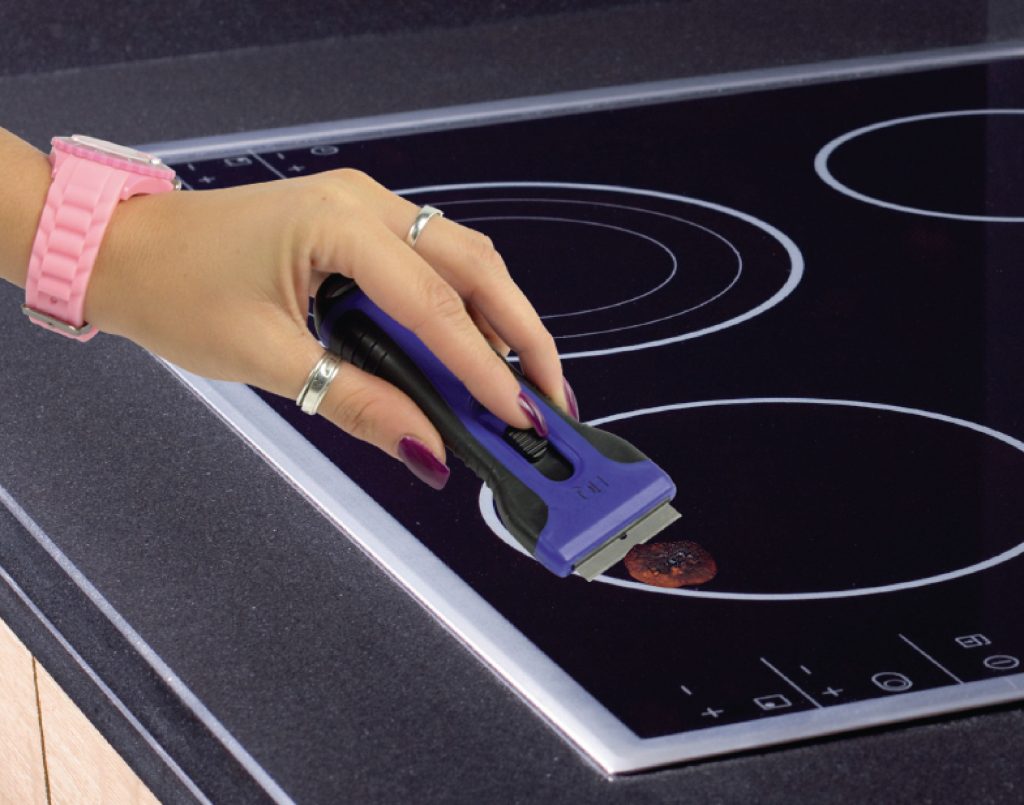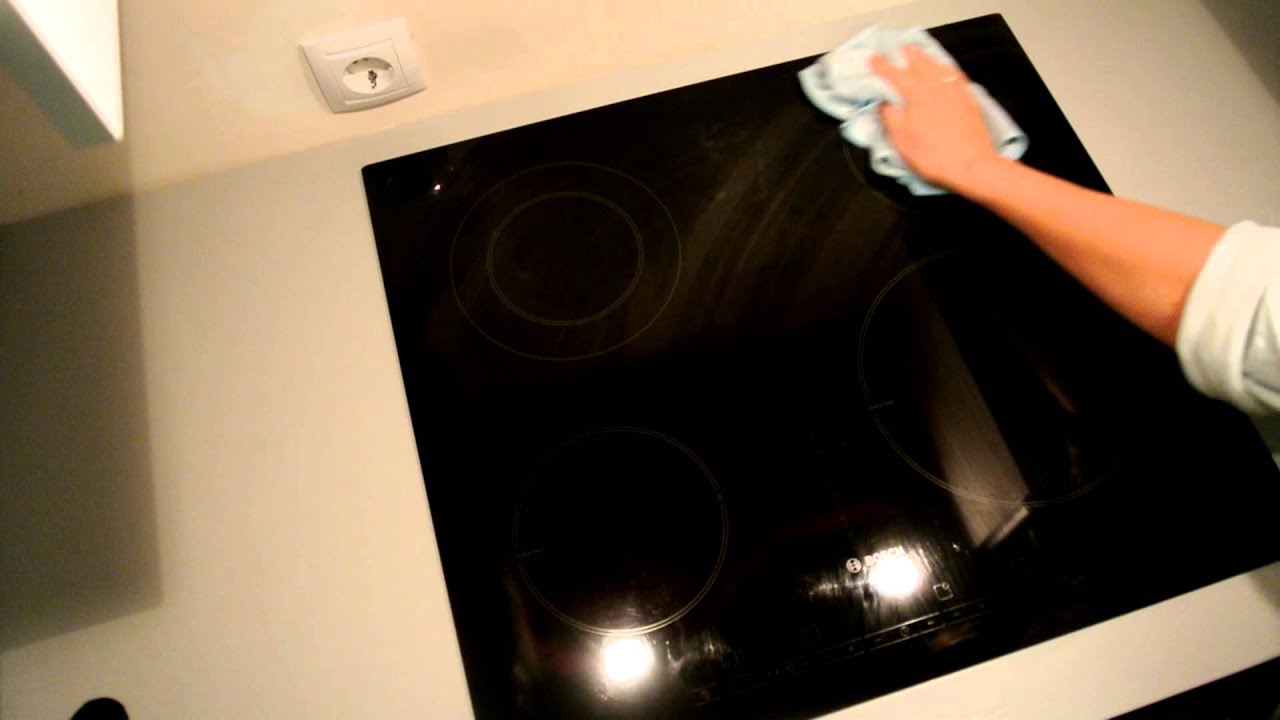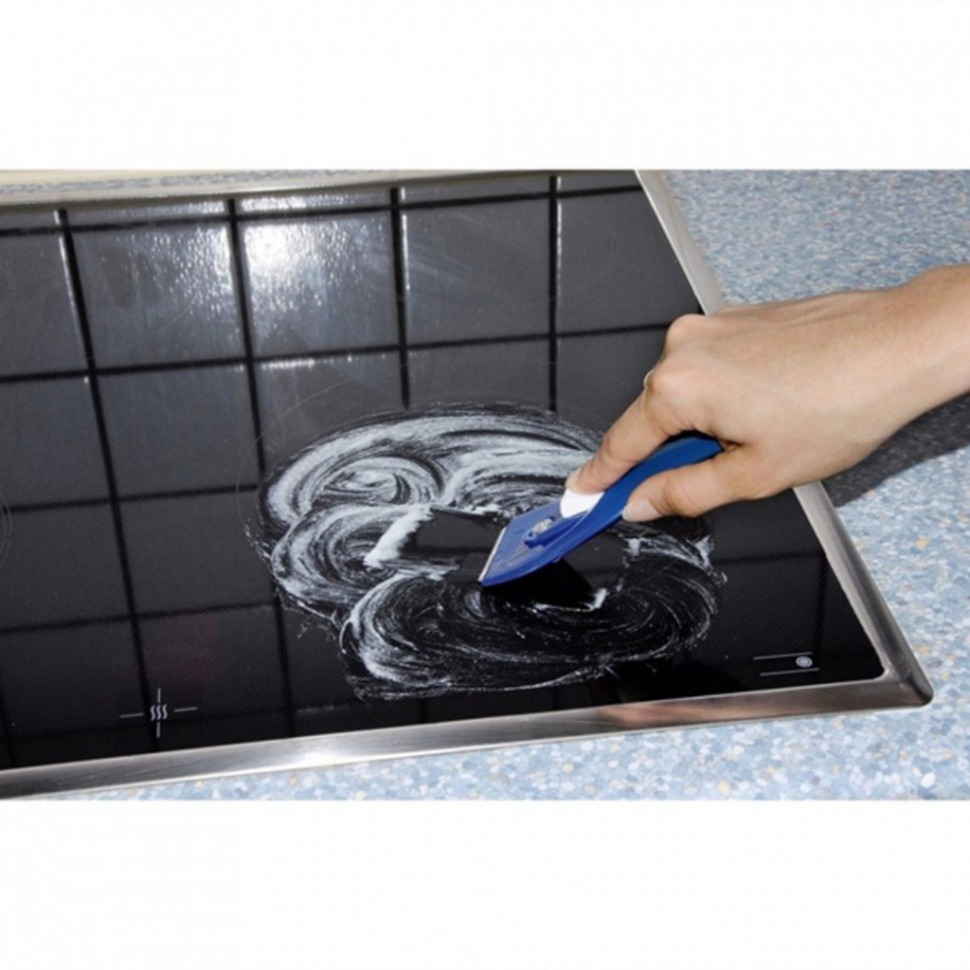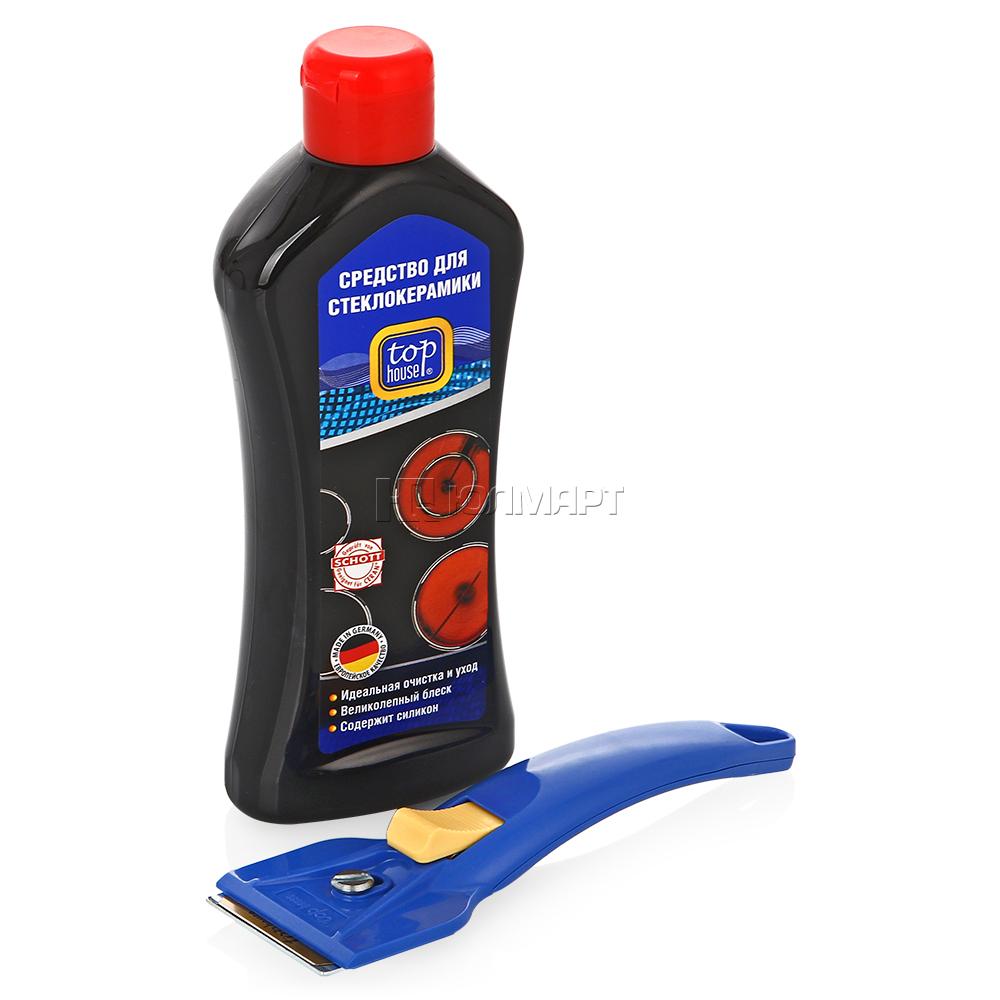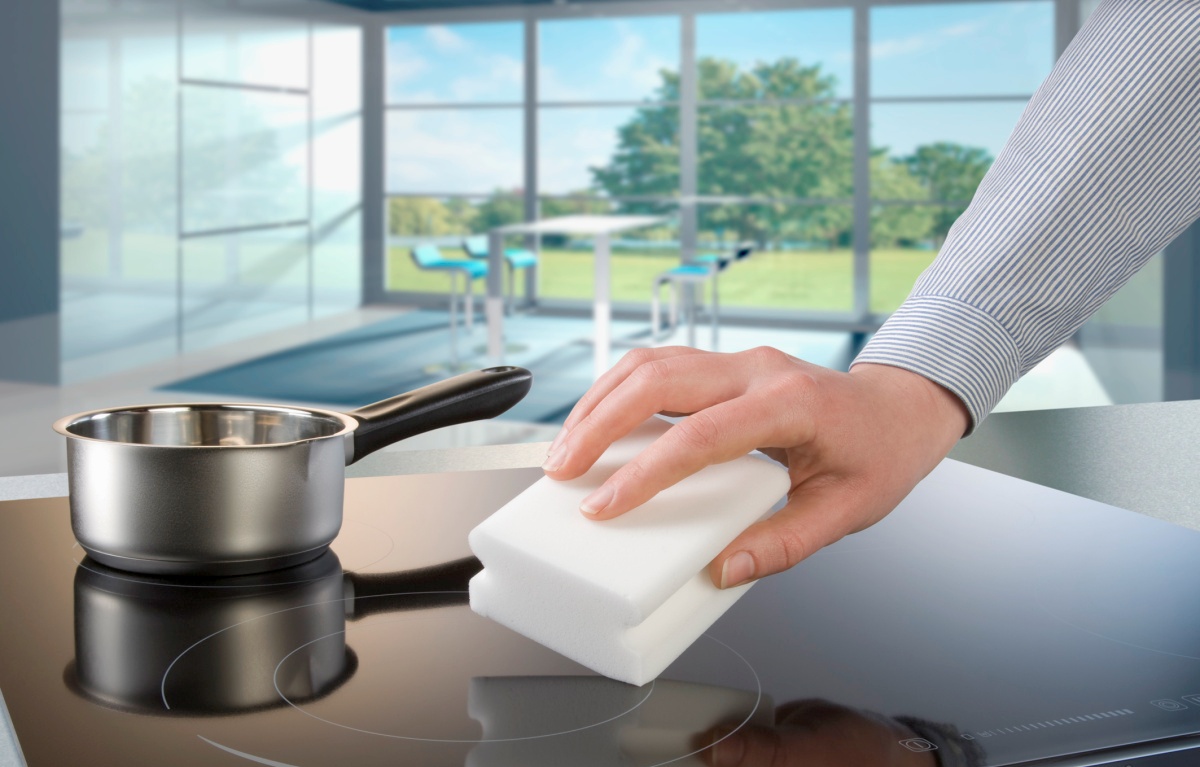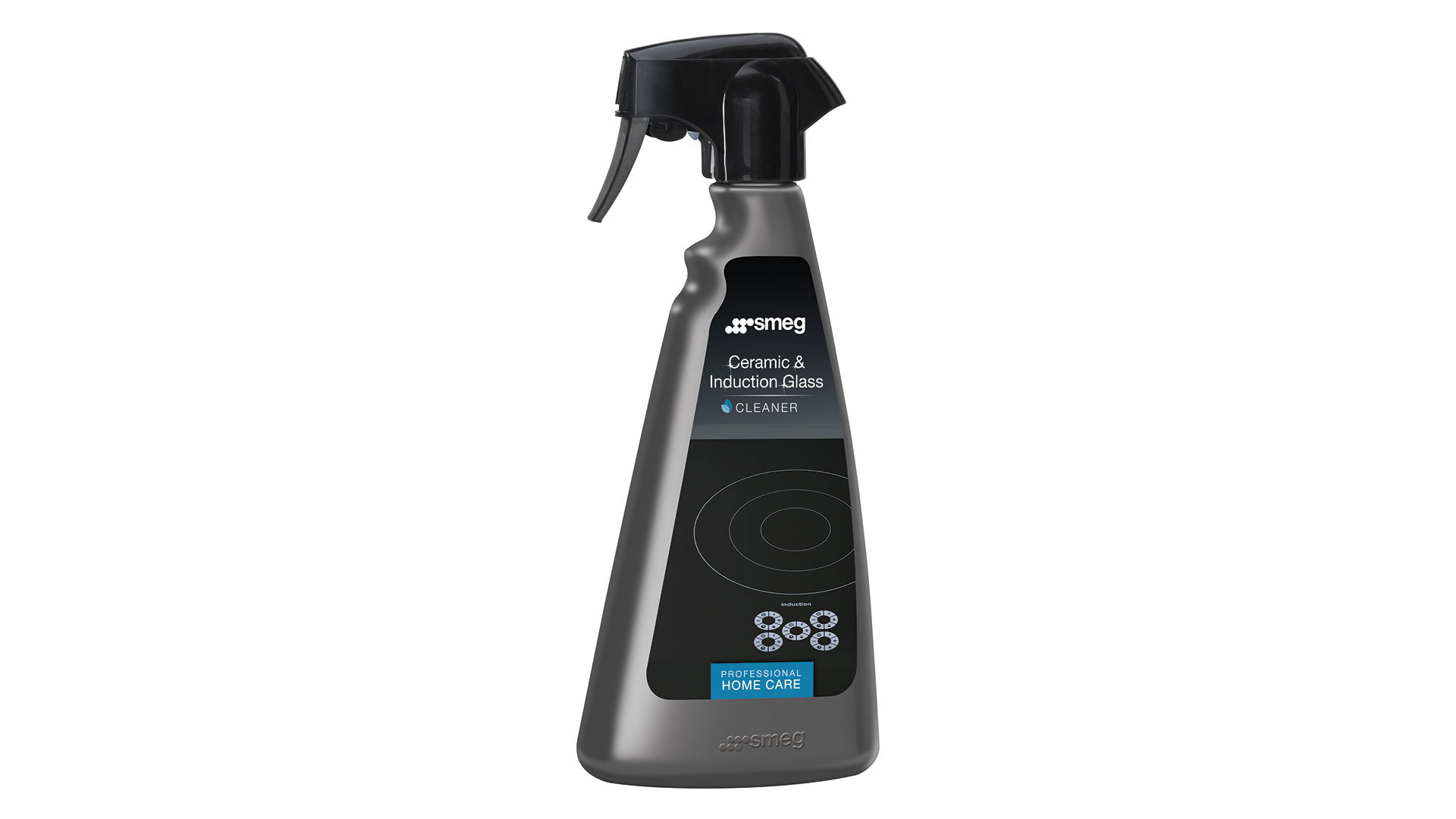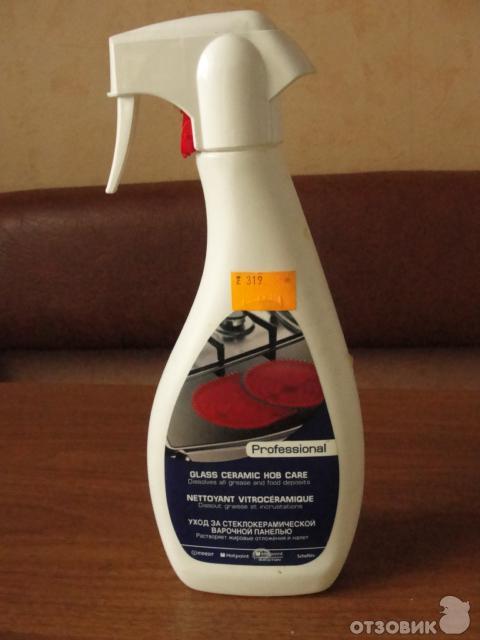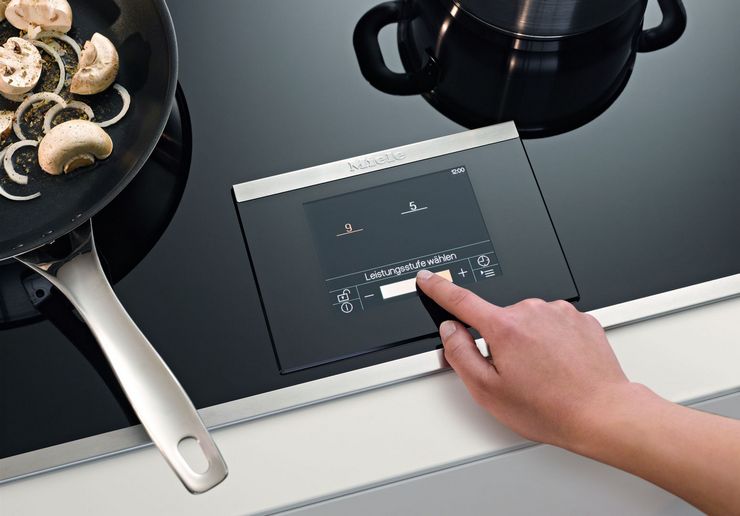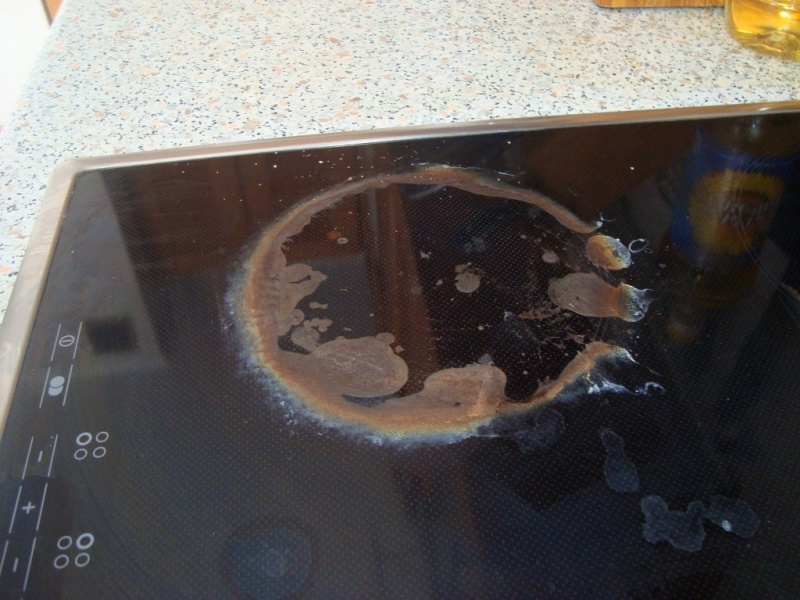How to protect your induction hob from damage
There are certain security measures
that will help you enjoy the benefits of your induction hob for a long time.
- For cooking on an induction hob, use only special cookware with a ferromagnetic bottom and a diameter of at least 12 cm. If you are cooking in a small saucepan or pot, use a special adapter.
- Manufacturers do not recommend using the dishes that were used on gas stoves for cooking on an induction hob, even if these pots and pans have the necessary ferromagnetic properties. The fact is that gas heating occurs unevenly, and gradually the bottom of the dishes is still subject to deformation. This hinders the efficient use of cookware on the induction hob.
- The glass-ceramic surfaces of induction cookers are very sensitive to abrasive materials. That is, sand, sugar, various iron scrapers and scouring pads can be dangerous for the stove.
- Glass-ceramic panels withstand heavy loads well, but can burst under strong point impact. Therefore, do not hang heavy knives, chopping hatchets and chop hammers over the stove. An accidental fall of such an object on the panel, even from a small height, can be critical.
- The induction hob does not remain completely cold during cooking. The maximum heating temperature differs for different stoves, and, as a rule, does not exceed 60 degrees. Nevertheless, the hotplate heats up, so be careful when working.
- Place cookware with a dry bottom on the hotplate. Avoid cold splashes on your induction hob. If this is done regularly, the glass-ceramic surface may be damaged.
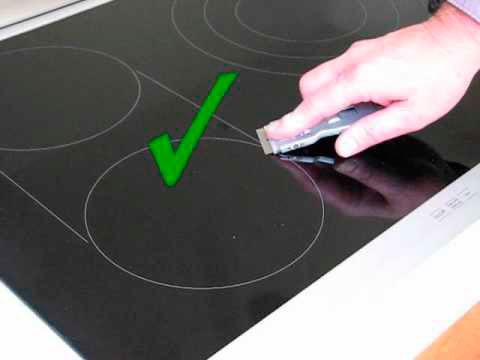
When solving issues related to the care of an induction surface, you can use the advice of housewives who already have experience in operating such equipment.
Although, of course, you need to treat them with a certain degree of caution. But, perhaps, they will be useful to you too.
- Stubborn dirt on the glass ceramic surface can be removed with baking soda. To do this, put a small amount of it on a damp warm cloth and gently wipe the place of pollution. Then rinse with water, wipe with a damp and dry towel.
- If you don't have a glass-ceramic surface care product at hand, which is good because it forms a thin silicone film that prevents further dirt, then you can replace it with ... ordinary sunflower oil. Apply just a few drops of oil to a dry sponge or cloth and rub it over a clean, dry surface.
- Grease splashes are perfectly removed by means for ordinary kitchen cleaning, such as "station wagons".
With a simple arsenal of tools: sponges, soft cloths, towels, glass ceramic cleaners, you can easily keep your induction hob in perfect condition. And following simple safety rules will help you enjoy the benefits of an induction hob for a long time.
A few practical tips below will help you quickly and effectively clean any hob and even ... take preventive measures against stubborn dirt.
Caring for your glass ceramic and induction hob
If you have an induction or glass-ceramic hob in your kitchen, apply a liquid intended for cleaning kitchen surfaces to clean it from dirt, and, shortly thereafter, wipe it well with an absorbent cloth.Be careful not to damage the glass surface, which means put aside abrasive objects (for example, a metal washcloth for removing dirt, which is always very tempting to use).
To get rid of stubborn stains after eating, you can use products specifically designed for this operation so as not to damage the surface. Search in the store sprays and gels grease removers for stoves and ovens
, the result of their work is far superior to home remedies. "Shumanit" will help you quickly forget about stubborn and stubborn stains. Spray generously on the dirty area, wait a little and wipe the hob with a sponge or cloth. The disadvantage of such products is in an unpleasant smell, so if you simultaneously process both the hob and oven trays, then a cotton-gauze bandage may be a good idea. And make sure that the spray does not get on food and clean dishes. Wear rubber gloves!
Use only delicate fabrics (preferably microfiber) to dry the cooker. Glass-ceramic slabs are very easy to scratch, so you don't even need to move the dishes on its surface. Be careful to match the diameter of the pots and pans to the diameter of the hotplate you are using. And so that cooking utensils are, in principle, suitable for induction or glass-ceramic hobs.
Care rules
In order for the induction cooker to serve for a long time and look perfect, you need to follow the operating rules. Follow these guidelines:
- Make sure the hob is clean before cooking.
- Use special flat-bottomed pans that will not scratch the glass ceramics.
- Clean the stove regularly with a cloth.
- Wash it as soon as it gets dirty with approved cleaners.
- Wipe dry after washing.
- If the stove is hot from the pan, wait until it has cooled completely before cleaning.
- If you need to immediately wipe the stain off a hot surface, use a dry cloth or tissue.
- Monitor the condition of the wire and socket.

What is not recommended?
The induction-type hob requires carefulness from the hostess both in cleaning and in cooking
In case of careless handling, there is a risk of scratching the protective layer, even chips may form
Contraindicated:
- Clean the hob with products containing abrasive (hard) particles - they can leave scratches. For the same reason, you cannot clean the stove with hard objects: knives, metal sponge.
- Rub the surface if there are solid food particles on it: sugar, salt, etc. You must first brush them off or let them get wet.
- Hang heavy objects over the stove or drop them. If they fall to the surface, it may crack.
- Start cooking while there are food residues on the hob. Otherwise, they will burn. The surface itself does not heat up, but the dishes cooked in it - yes.
- Expose the surface to sudden changes in temperature - put dishes from the refrigerator on it, sprinkle with cold water.
Like any hob, an induction hob tends to get dirty. This happens during the cooking process. And if other types of stoves - gas, electric, Hi-Ligh - can be washed only after they have cooled down, then it is better to wipe the induction from stains right away. She remains cold, this is her main advantage. In case of severe contamination, manufacturers recommend getting a special scraper and a detergent with silicone oils. They will help you quickly and effectively wash glass ceramics to a shine, as well as protect it from the adhesion of dirt in the future. If there is no special cleaner at hand, baking soda, vinegar, ammonia, and regular dishwashing detergent will help out.
How to protect your induction hob from damage
There are certain safety measures that will help you enjoy the benefits of your induction hob for a long time.
- For cooking on an induction hob, use only special cookware with a ferromagnetic bottom and a diameter of at least 12 cm. If you are cooking in a small saucepan or pot, use a special adapter.
- Manufacturers do not recommend using the dishes that were used on gas stoves for cooking on an induction hob, even if these pots and pans have the necessary ferromagnetic properties. The fact is that gas heating occurs unevenly, and gradually the bottom of the dishes is still subject to deformation. This hinders the efficient use of cookware on the induction hob.
- The glass-ceramic surfaces of induction cookers are very sensitive to abrasive materials. That is, sand, sugar, various iron scrapers and scouring pads can be dangerous for the stove.
- Glass-ceramic panels withstand heavy loads well, but can burst under strong point impact. Therefore, do not hang heavy knives, chopping hatchets and chop hammers over the stove. An accidental fall of such an object on the panel, even from a small height, can be critical.
- The induction hob does not remain completely cold during cooking. The maximum heating temperature differs for different stoves, and, as a rule, does not exceed 60 degrees. Nevertheless, the hotplate heats up, so be careful when working.
- Place cookware with a dry bottom on the hotplate. Avoid cold splashes on your induction hob. If this is done regularly, the glass-ceramic surface may be damaged.

How to care for your electric stove
All housewives who use an electric stove every day know that particles of fat and food inevitably get on its surface. If the stove is not immediately cleaned of food debris, then they dry out and turn into difficult-to-clean stains, which are quite difficult to deal with. This applies to hobs made of various materials. Today the hob surfaces of electric stoves can be enameled, made of stainless steel and glass ceramics.
Electric cookers with enamelled and stainless steel surfaces are equipped with round cast iron burners, which are popularly called “pancakes”. This material retains heat very well, but it is quite fragile, therefore it requires careful handling. When heated, thermal stresses arise in the body of cast-iron burners, which also increase with increasing temperature. As a result, under the influence of high temperature, cracking of the burners occurs.
To avoid the destruction of the burners, you must adhere to the following rules:
- do not turn on the hotplate at full power if there are no dishes on it. If it turns out that it is red-hot, you must immediately turn off the stove and let it cool down on its own. Do not cool the hotplate using various cold objects, such as containers with cold water. Remember that temperature changes have a negative effect on the surface of any household appliance or kitchen utensils;
- Do not place a wet saucepan on the hotplate, as water causes intense corrosion of the hotplate. It is also not recommended to place a pan with a diameter smaller than the hotplate itself on the hotplate. This leads to overheating of the hotplate and, therefore, reduces its service life;
- cooking surfaces of almost all stoves are covered with anti-corrosion compounds, therefore it is strictly forbidden to clean them with metal brushes and brushes.
Organic residues contribute to corrosion and create a gap between the base of the cookware and the cooking zone. Therefore, the hotplates must be cleaned as they become dirty.Before starting cleaning, the knobs of the switches should be set to zero position, and the hob itself should be disconnected from the mains. Wipe the entire surface of the burner with a soapy sponge.
You can use a wooden spatula or wire scrubber to remove food debris. After removing all hardened dirt, rinse the entire surface of the burner with a clean, wet sponge and wipe dry with a clean towel. Then you can turn on the hotplate for a couple of minutes to let it dry completely.
The hotplate is usually secured with a chrome-plated retaining ring. It turns yellow during operation and under the influence of high temperature. You should not try to clean it, because yellowness appears as a result of chemical changes in the coating, which is simply inevitable, and cleaning the ring can only ruin it.
If dirt remains on the grooves of the heating discs, sprinkle these areas with a regular baking powder, then wipe with a soft, damp sponge and dry the surface. In the event that something escaped onto the stove during cooking, you must immediately wipe it and apply a few drops of vinegar to reduce the burning smell.
A special reducing agent can be used to protect the burner from corrosion and to give it an attractive appearance. It must be applied to the slightly warm surface of the burner, and then heated to better fix the product. You can also use a simple tool at hand - vegetable oil. It must be dripped onto the burner and rubbed well over its surface with a paper napkin. Excess oil should also be removed with a napkin. This procedure is recommended to be carried out at least once every three months.
Bars care
The grates must be removed every time the stove is washed, the burners - as they become dirty, and the regulating knobs are only used for general cleaning. Enamel grilles are easy to clean. This can be done with a dishwasher. For manual cleaning, use the same products as for the stove itself. If the grates are very dirty, then they can be placed in a bowl with hot water and detergent, where they can be left for a while.
Uncoated steel grates can be cleaned with a wire brush or any abrasive. It is not recommended to use any acid, including vinegar, to clean such gratings. Cast iron grates are the hardest to clean. Dry them after each contact with water to prevent rust formation.
Cast iron grilles must not be cleaned with metal brushes and generally must be handled with great care, as they may chip on impact. Heavily soiled cast iron grates can be cleaned with a fire
To do this, it must be held over the fire until all the impurities are burned out.
The adjusting knobs can be made of stainless steel or plastic. In both cases, they must be removed and immersed in a soapy solution for a while. When all the dirt is removed from the handles, they must be rinsed, wiped and reinstalled. The non-removable handles are somewhat more difficult to clean. For everyday cleaning, you can use a solution of ammonia and water, and for general cleaning it is better to use a detergent and a toothbrush. You can use a toothpick to remove any dirt that has accumulated under the handles.
Unusual carbon cleaners
Sometimes there is not enough time to wash or wipe down the stove immediately after cooking. Thus, it is not uncommon for a multi-layer carbon deposit to form on the induction surface.
If the standard methods for removing grease and dirt do not work, we recommend using the following tricks:
- Soak a stove-cleaning cloth in warm water and place on the dirty area for 10 minutes. After the food residues are soaked, remove them with a rubber scraper.
- In severe cases, apply a special cleaning agent to the cloth and place it on top of the problem area for 10 minutes.
- You can use sunflower oil to remove carbon deposits. Apply it to the hob and wait a little, then rinse off with a sponge dipped in warm water.
- Regular baking soda will do a great job of removing any kind of contamination. Mix it with water to a paste consistency and spread evenly over the dirty area, then remove with a sponge.
Often housewives prepare their own cleaning agent from ingredients that are found in almost every home. For example, vinegar. It has excellent disinfecting properties and removes all germs and bacteria.
So, to make a vinegar cleanser:
- mix vinegar and water in a 1: 1 ratio;
- pour the resulting solution into a spray bottle;
- apply to the contaminated area and let sit for 5 minutes;
- wipe the stove with a dry cloth or paper towel.
Also use ammonia. It removes stubborn stains and build-up deposits and polishes glass ceramic surfaces well. To prepare the solution, mix water and ammonia in a ratio of 1: 5, then apply to the surface using a spray bottle and wait 10 minutes. Then wipe the plate off with a soft cloth.
Removal of various contaminants
Let's take a look at the most common types of stains caused by the following substances:
Sugar
The melted sugar mass should be removed before it has cooled down. To do this, use a scraper, acting slowly, without much pressure. If the sugar has cooled down, spray hot water onto the stain before cleaning the panel. After that, collect the heated mass with a scraper. When all the sugar has been removed, the surface is rinsed with a glass ceramic care product.
Burnt food
Apply hot water to the burn and start scrubbing gently with a scraper. Remove the remnants of burnt food gradually, layer by layer, constantly wetting the surface with water or wiping with a damp sponge.
A melamine sponge will also help remove carbon deposits, which will rub off dirt like an eraser.
What to do if plastic melted, aluminum foil, rag burnt? Try to immediately remove the dirt with a scraper. In the case when the molten material has had time to cool, hot water is applied to the spot and only then the burn is scraped off. Finish cleaning the stove in the usual way.
Another option for cleaning carbon deposits is to use vegetable oil, and it will cope even with a dried stain. The contaminated surface is treated with oil, left for 30 minutes. After this time, the burn can be easily removed with a scraper. It remains to rinse the panel, and the stove is clean again.
Fat
Stubborn greasy marks can be removed with baking soda. It should be diluted with water until a thick slurry is formed. Apply this mixture to a damp sponge and then treat the stains. You can leave the substance to act for a while, but just prevent it from drying out. At the end, it remains to collect the soda gruel, which will absorb the fat, and wipe the surface.
Limescale, stains
Stripes from water, stains after cleaning are removed with vinegar solution. Vinegar is mixed with water in equal proportions. For convenience, the prepared mixture is poured into a spray bottle. The substance is applied to the surface of the plate, left for 3 minutes. Remove the residues of the substance first with a damp sponge, and then wipe with a dry cloth.
Progress does not stand still, and one of its manifestations for housewives is the emergence of a variety of household appliances, which have, in comparison with the previous mass, useful properties. For example, massive hobs have been replaced by hobs that are light, comfortable and very ergonomic.
However, despite its advantages and attractive appearance, the question of cleaning and bringing it to a proper appearance remains open.No matter how careful you are in the process of preparing culinary masterpieces, drops of fat, fumes, boiled broths and other liquid dishes, as well as other stains will remain on the surface of the panel.
Of course, they need to be quickly wiped off with a rag after cooling, but there are times when this cannot be done, therefore, as a result, we get ugly burnt spots and stains on our kitchen assistant.
Despite the traditional Russian tradition, before you start using the panel, carefully read the rules of its operation and maintenance! This will save you unnecessary trouble, and she will allow you to serve you faithfully for many years.

This glossy surface should be cleaned daily after use.

 If you cooked carefully, without burnt food residues, then you can simply wipe the surface with a damp cloth and wipe dry without streaks.
If you cooked carefully, without burnt food residues, then you can simply wipe the surface with a damp cloth and wipe dry without streaks.
For cooking, you should use only good working utensils with a flat bottom. During use, pots and pans will develop cracks and dents, which during cooking can damage the panel and leave scratches on it.
Therefore, the purchase and installation of a glass-ceramic hob is an excellent reason to update the arsenal of kitchen utensils.
Moreover, the lids for pots and pans must be selected strictly according to the diameter of the dishes. Otherwise, condensation water will drip onto the panel. Even if it is cooking regular scrambled eggs, you will have to wash the panel afterwards.
How to properly start using an induction hob
Caring for a purchased new product implies not only the timely removal of contaminants, but also correct operation. Violation of simple but important rules can have various and not very pleasant consequences. How to get started with an induction hob?
- Check the basic settings for correct installation. Your panel should be well ventilated. To do this, the distance from the back wall to the surface must be at least 4 cm. The distance between the stove and the lower kitchen element must be at least 2 cm.
- It is undesirable to install the stove over a dishwasher, refrigerator, freezer or other devices with metal surfaces. If this cannot be avoided, then such devices must be reliably insulated with a sealed gasket.
- Naturally, the stove must be installed on a flat surface that is resistant to temperature heating up to at least 100 degrees Celsius.
- Your induction hob is now installed. Now inspect it for traces of glue, and if there are, remove them with a special detergent. If you have not had time to purchase the necessary household chemicals, then use the usual non-abrasive cream or gel.
- After the panel is connected to the mains, you will hear a beep. It means that the hob can be connected. In order to do this, you need to press the "Network" button and hold it for 1-2 seconds. Your cooker is ready to go.
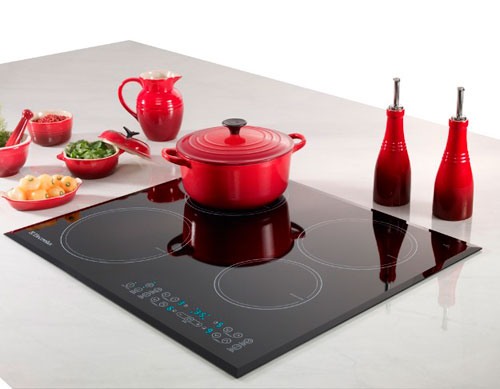
Oven care
Washing the oven is not a pleasant experience. Stubborn dirt accumulates on its walls and bottom, the lion's share of which falls on burnt-on greasy spots. With each cycle of heat treatment, they “stick” to the surface more and more. Therefore, to combat them, manufacturers are constantly coming up with new special technologies and materials.
Currently, there are ways to clean ovens such as:
- traditional. This method uses household detergents. It is not recommended to use abrasive products and tools, for example, dishwashing powders and metal sponges, as well as chemically active compounds containing acid and chlorine. It is best to use special sprays designed for the care of ovens;
- hydrolytic.In this case, place a baking sheet with water and detergent in the oven. Then the oven is heated to 90-95 degrees and kept at this temperature for about thirty minutes. Then the oven is turned off, allowed to cool, and all internal surfaces are wiped. At the same time, fresh grease stains are removed very effectively, but the cleaning process takes a lot of time;
- catalytic. The walls of the oven are covered with a special porous enamel, which, when heated to 140-200 degrees, absorbs fat, which then decomposes in its pores. After the oven has cooled down, the hostess just wipe it from the inside with a damp cloth. This method is one of the most convenient, but the catalytic properties of the enamel weaken over time and the catalytic panel has to be changed after 5-6 years;
- pyrolytic. With this method, the oven is heated to 500 degrees, so all the dirt inside it literally burns out, turning into ash. Such cleaning has one very significant drawback - high energy consumption.
How to wash the oven
It is not recommended to wash the oven with pastes and products containing various abrasives, as they leave scratches on the surface layer of any material, be it enamel, polished aluminum or tempered glass. For this reason, steel wool should not be used.
It is best to use special chemicals designed to clean the ovens from stubborn grease. It is best to choose a product that belongs to the category of environmentally friendly formulations. In such formulations, grapefruit or lemon oil is often used. They are very effective in softening even the oldest dirt, without causing any harm to health. Such products can be safely used to clean surfaces that are in direct contact with food.
The use of "non-ecological" chemicals is also not dangerous if used strictly according to the instructions. Most often, sodium hydroxide (acoustic soda) is used in such cleaning compositions, which is a very caustic alkali. It eats away any fatty deposits, but after using it, you must very carefully wash the oven with hot water.
Cleaning the oven with a chemical cleaner is quite simple. It is necessary to apply it to the contaminated surface and leave it there for a while. Then the softened dirt can be easily removed with a soft, damp cloth.
Folk remedies for washing the oven
Most often, a folk remedy such as a mixture of vinegar and baking soda is used to clean the oven. They must be mixed in a 1: 2 ratio. You can also add some water and dish soap. The resulting paste is applied to the walls of the oven and left for a while. Instead of dish soap, you can use a small bar of laundry soap. You can also wipe the walls of the oven with vinegar and sprinkle with baking soda on top. At the final stage, all internal surfaces of the oven are thoroughly wiped with a soft, damp cloth.
There is another rather effective folk way - ammonia and water. In this case, you need to take two containers. Pour boiling water into one of them, and ammonia into the other. The oven is heated to a temperature of 70 degrees and a container with water is placed on the lower shelf, and with alcohol - on the upper one. Leave both containers in the oven overnight. In the morning, take out the grates, add warm water and dishwashing liquid to the container with ammonia, and wipe the walls of the oven with this solution.
Baking powder removes grease stains from the enamel surface well. It should be applied to the stain, sprinkled with a little water and left for 15 minutes. Then rinse off along with the contamination. A mixture of soda and citric acid has the same effect.
Recommended detergents
Before going to the store, get the instructions for your stove and be sure to read the list of products that you can use for cleaning. Often, the manufacturer even indicates specific names.
If the instruction is lost or there was no useful information in it, then you can enlist the experience of those who successfully keep their stove clean and tidy. So, take note of the following tools - they can be found in stores and they are not so expensive:
- Top House - often sold in a set with a scraper, blades and a special napkin (it costs 600 rubles in the kit - it is quite affordable);
- Dr. Beckmann is an effective gel with a dispenser, has a slightly chemical smell, but copes well even with outdated stains;
- Vitro Care - the manufacturer claims to be an environmentally friendly product, removes stains with a bang and is quite economical in consumption.

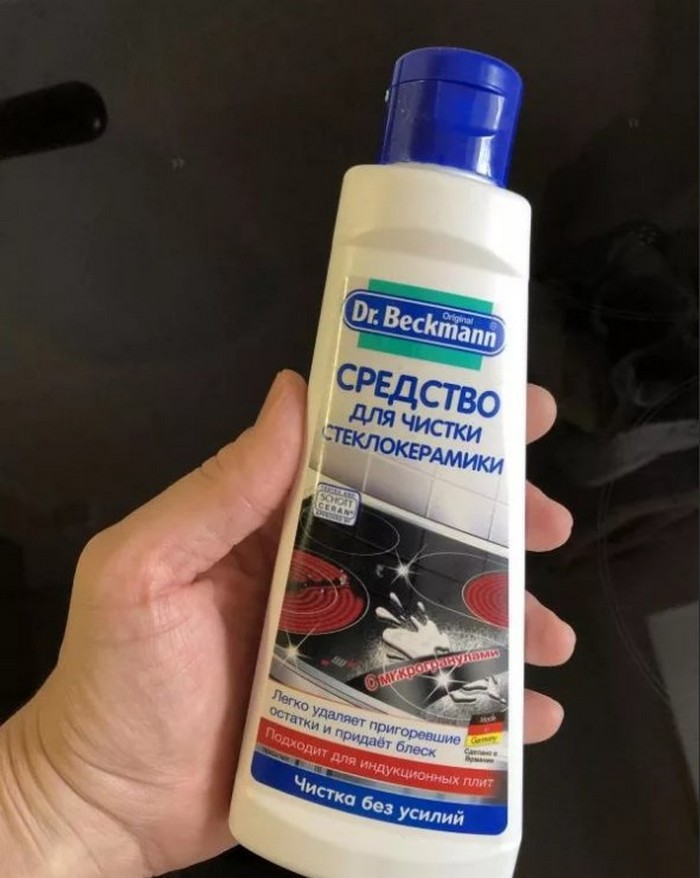

But with means for cleaning glass and mirrors, you should be more careful. Of course, if you decide to use this method once, then nothing bad will happen. But if such care becomes systemic, there is a great risk of trouble in the future.

